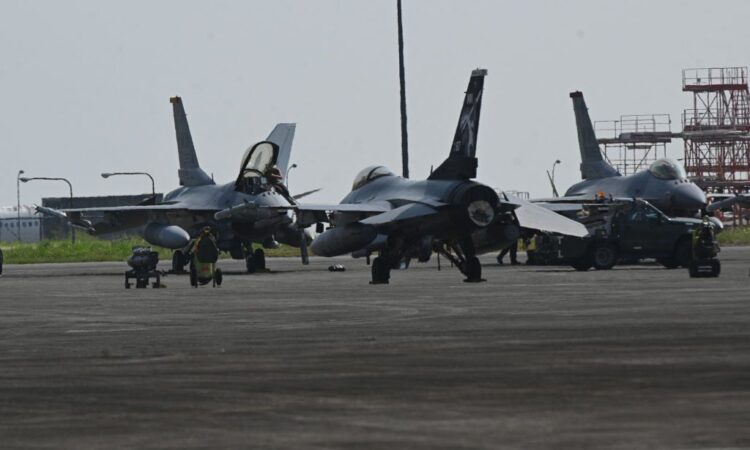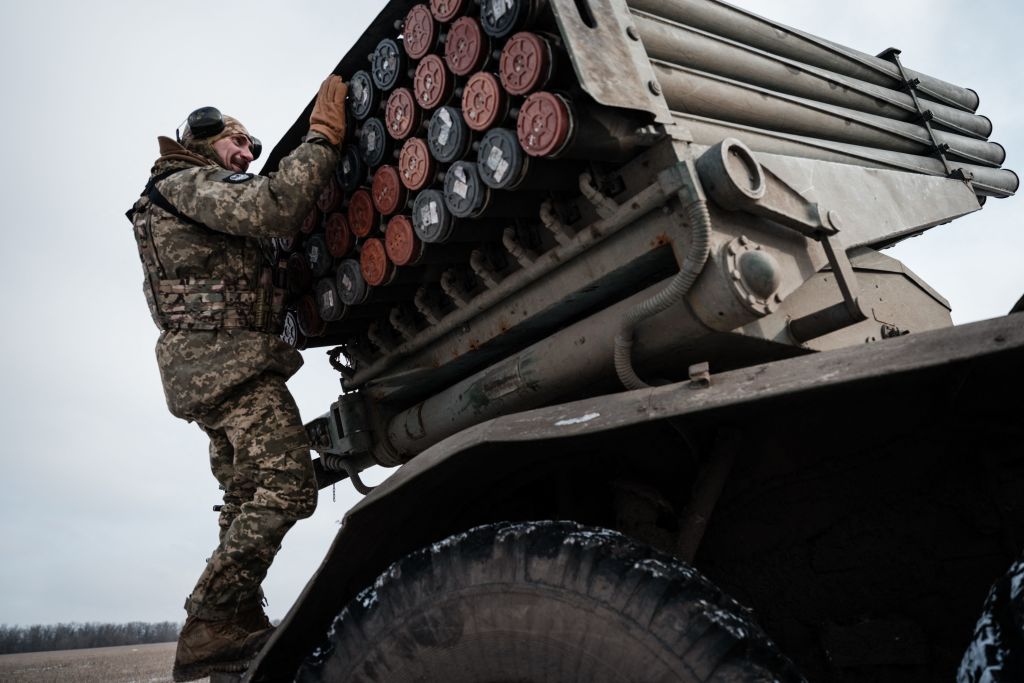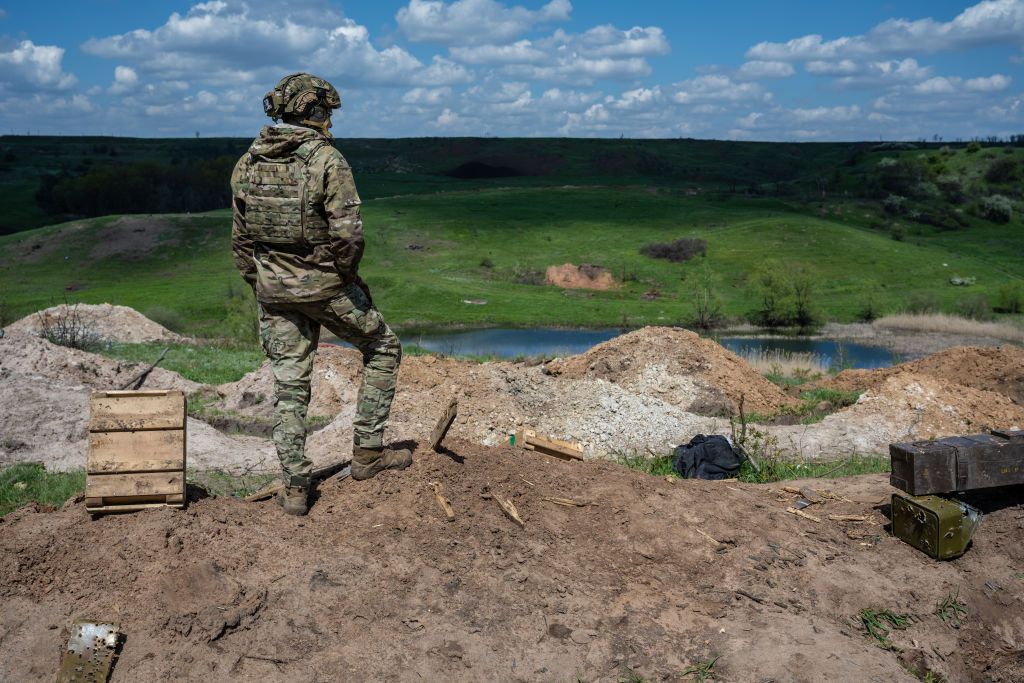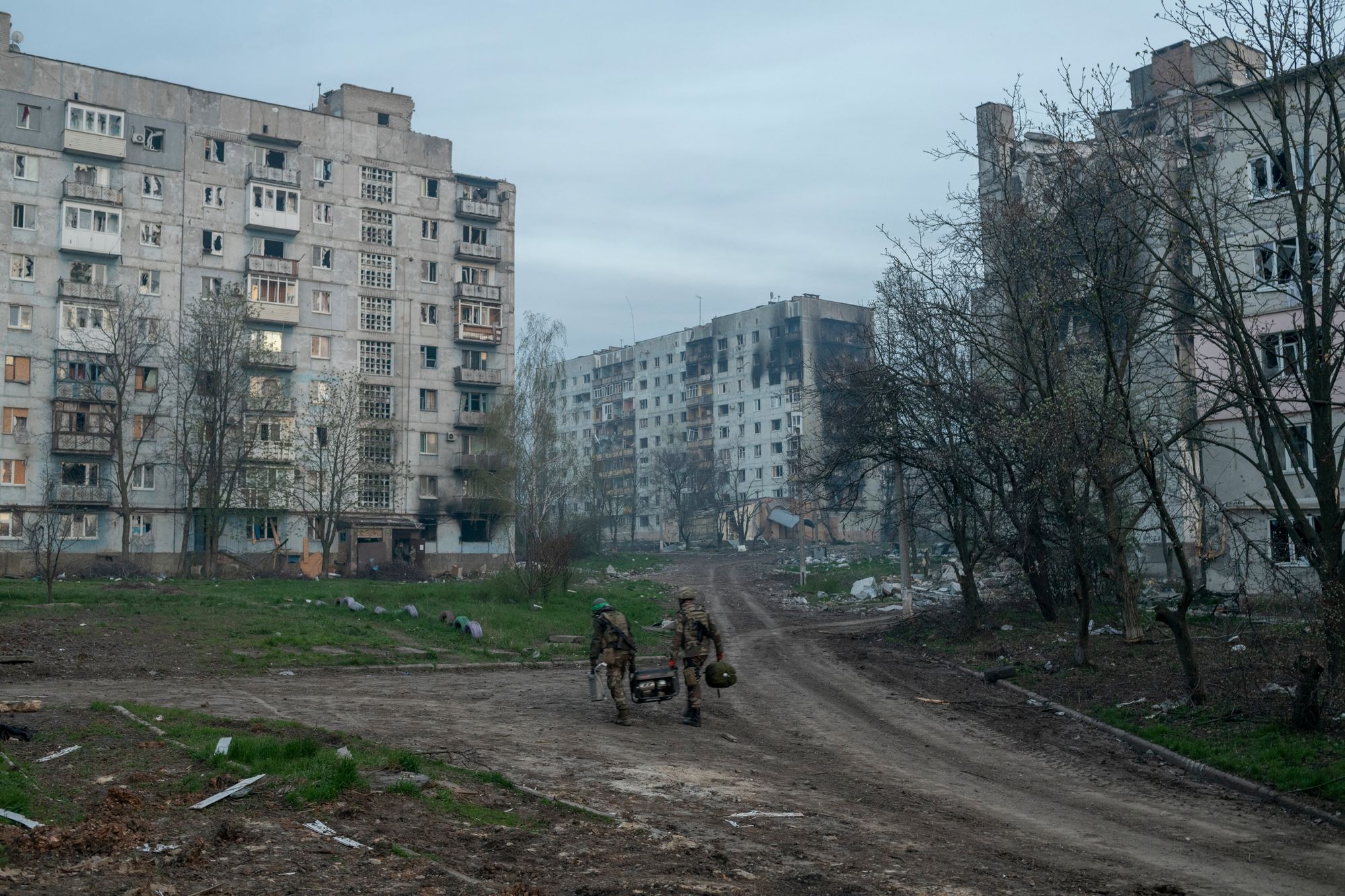
Key developments on May 23:
- Air Force prepares for Ukrainian pilots training on F-16s
- Russia cancels so-called ‘counter-terrorist operation’ in its Belgorod Oblast
- Ukraine receives $1.6 billion in macro-financial assistance from EU
- Zelensky marks Marines Day at front line
- Germany provides Ukraine with air defense radar, recon drones
Ukraine’s Air Force denied EU diplomacy chief Josep Borrell’s claim on May 23 that several European countries, including Poland, had already “started training” Ukrainian pilots on U.S.-made F-16 fighter jets.
Air Force spokesperson Yurii Ihnat said that preparations for the training program are “still ongoing,” noting that Ukrainian representatives are now in the countries providing the training to “study how the process will go.”
“For a long time, unfortunately, I’ve had to refute (claims) that ‘pilots study in the U.S., (and) Europe,” Ihnat said in a televised interview on May 23. “There is no need to give any extra hope.”
Ukrainian pilots have yet to arrive in these countries, Ihnat said.
However, a source in the Polish government confirmed the information about the start of the F-16 training to Ukrainian news agency Ukrinform. The source said an official announcement will be made soon.
Some countries have expressed willingness to train Ukrainian pilots, while others are ready to provide fighter jets. However, Ukraine’s allies have yet to decide which country will provide the jets, how many, and when.
The U.K. and the Netherlands agreed on May 17 to build an international coalition to provide F-16s to Ukraine. Several other countries, including the U.S., have joined the initiative.
On May 22, U.S. State Department spokesperson Matthew Miller said that training Ukrainian pilots to use F-16s and working with allies to provide Ukraine with advanced fighter jets remains a “priority” for Washington in the coming months.
The delivery of F-16s to Ukraine will take “several months at best,” U.S. Air Force Secretary Frank Kendall said on May 22. He added that “several months” is relatively quick, since it usually takes over two years to train a new American pilot on such an aircraft.
Ukraine has been campaigning for the provision of F-16s for months. Yuriy Sak, an adviser to Defense Minister Oleksii Reznikov, said on May 16 that Ukraine wants between 40 and 50 F-16s.
Russian Deputy Foreign Minister Alexander Grushko claimed the West would face “colossal risks” if Ukraine were to receive the promised F-16s.
When asked whether providing the aircraft to Ukraine is indeed a “colossal risk,” U.S. President Joe Biden responded by saying, “It is… For them (Russia).”
The U.S.-built F-16, operational since the 1970s, is used by over 20 countries as the jets have improved situational awareness, precise targeting, and combat effectiveness.
Providing Ukraine with F-16s would greatly enhance the country’s security capabilities.
Editorial: Arming Ukraine won’t escalate war. Reluctance to do so will
First it was the tanks, now it’s the fighter jets. As Ukraine braces for another possible major Russian offensive in the upcoming weeks, Western leaders are yet again coming up with a variety of excuses why this time, they cannot justify supplying F-16 and F-35 fighter jets to Ukraine.

Russia calls off so-called ‘counter-terrorist operation’ in Belgorod Oblast
Russia’s Belgorod Oblast Governor Vyacheslav Gladkov said he called off a so-called “counter-terrorist operation” targeted at Russian anti-government partisans claimed to have been fighting in the region.
Gladkov had announced the operation on May 22 amid reported attacks by Russian anti-government partisans. Earlier the same day, the Russian Volunteer Corps and Free Russia Legion, armed Russian anti-government groups allegedly fighting on Ukraine’s side, claimed its members conducted combat operations in Belgorod Oblast.
Russia’s Defense Ministry accused Russian partisans of having been “Ukrainian formations,” and claimed to have killed “70 combatants” and destroyed some of their equipment while “driving the remaining formations from Belgorod Oblast into Ukrainian territory.” The ministry provided no evidence to back its claims.
However, the Russian Volunteer Corps denied the Russian Defense Ministry’s claims, saying its combatants had not been killed.
An advisor to Ukraine’s Presidential Office, Mykhailo Podolyak, said Kyiv had “nothing to do” with the operation in Belgorod Oblast on May 22.
“The only driving political force in a totalitarian country of tightened screws is always an armed guerrilla movement,” he tweeted on May 22. “Ukraine is watching the events in the Belgorod region of Russia with interest and studying the situation, but it has nothing to do with it.”
Meanwhile, a spokesperson for Ukraine’s military intelligence, Andrii Yusov, confirmed the operation, but emphasized that it was conducted by Russian citizens who, while “part of defense and security forces” in Ukraine, acted as “independent entities” in Russia.
Gladkov didn’t provide further details on the situation in the region. He also didn’t mention whether residents, who he claimed fled front-line villages in Belgorod Oblast after he announced the “counter-terrorist operation,” could return.
“Russia is facing an increasingly serious multi-domain security threat in its border regions, with losses of combat aircraft, improvised explosive device attacks on rail lines, and now direct partisan action,” the U.K. Defense Ministry said in its update on May 23.
According to the Institute for the Study of War, the Russian information space experienced “panic, factionalism, and incoherency” after reports of fighting in Russia’s Belgorod Oblast.
Where does Russia expect Ukraine’s counterattack? Overview of defensive lines
As Ukraine gathers forces for the counteroffensive, Russia continues to build defensive lines on a massive scale. The lines are especially formidable in the southwestern part of Zaporizhzhia Oblast, where many observers expect the main Ukrainian assault to strike. But defenses have been prepared a…

Zelensky commemorates Marines Day at front line
President Volodymyr Zelensky visited naval infantry troops at the front line in Vuhledar, Donetsk Oblast, to mark the national Day of the Ukrainian Marines on May 23.
“Prepared for operations on land, at sea, and in the air, Ukrainian marines successfully perform complex tasks. The enemy feels the power of our warriors,” Zelensky said, thanking the troops for defending Ukraine.
Zelensky also handed out awards to commanders of several marine units, including the “Hero of Ukraine” and “Order of the Gold Star” awards to Colonel Yurii Andriienko and Colonel Mykola Palas, respectively. Colonel Oleksii Androsov, the Ukrainian marines’ chief of staff and deputy commander, was conferred the rank of Brigadier General.
Ukraine has commemorated the Day of the Ukrainian Marines on a national level since 2014.
Vuhledar is located near Marinka, a city that Ukraine’s General Staff has said is experiencing some of the “fiercest fighting.” Photos published by Donetsk Oblast Governor Pavlo Kyrylenko on March 26 show the magnitude of destruction in Vuhledar.
Russia’s centuries-long quest to conquer Ukraine
Editor’s Note: This is episode 2 of “Ukraine’s True History,” a video and story series by the Kyiv Independent. The series is funded by the Institute for War and Peace Reporting within the program “Ukraine Forward: Amplifying Analysis.” The program is financed by the MATRA Programme of the Embassy o…

Ukraine receives aid from EU, Germany
Ukraine received another 1.5 billion euros (about $1.6 billion) as part of the European Union’s macro-financial assistance package, the Finance Ministry reported on May 23.
This is the fourth tranche of the 18 billion euro package, which is transferred to Ukraine in installments throughout the year.
The program aims to assist Ukraine in paying for essential public services, maintaining macroeconomic stability, and repairing critical infrastructure destroyed by Russian attacks.
“EU financial assistance is a significant contribution to Ukraine’s victory over the aggressor, said Finance Minister Serhii Marchenko.
Prime Minister Denys Shmyhal also announced that Hr 588 million ($16 million) in subsidies has been allocated to the budgets of seven oblasts for reconstruction efforts as part of a joint program with the European Investment Bank.
Meanwhile, the German government announced the delivery of more military aid to Ukraine, which includes a TRML-4D air defense radar system and 46 VECTOR reconnaissance drones.
The contribution also includes two BIBER bridge-layer tanks, three mobile and protected demining devices, eight anti-drone systems, six border vehicles, two trucks, 20 extendable platforms, five heavy trucks and 12 trailers, eight cars, and 34 pickups.
According to the report, Germany has also delivered eight more Zetros trucks for extreme off-road conditions, bringing the total number to 92.
The German government has pledged to provide Ukraine with a total of 5.4 billion euros ($5.8 billion) in 2023. In 2022, Ukraine received 2 billion euros ($2.15 billion) from Germany, which has also committed to providing around 10.5 billion euros ($11.3 billion) for subsequent years.
Russia takes Bakhmut: Taking stock of the war’s bloodiest battle so far
CHASIV YAR, Donetsk Oblast – Ten months after Russia’s assault on the once-flourishing city in Donetsk Oblast began, Bakhmut has now been effectively occupied by Russian troops. This hasn’t been confirmed yet by Kyiv, but is evident based on both official statements and those made by soldiers on th…







